The armadillo, pangolin, and hedgehog are common animals that roll into a ball. However, that list extends longer to include some unlikely creatures like spiders and aquatic animals.
If you want to know what animals roll into a ball, you want to read this. But before we get to the list, let us look at why animals do this in the first place.
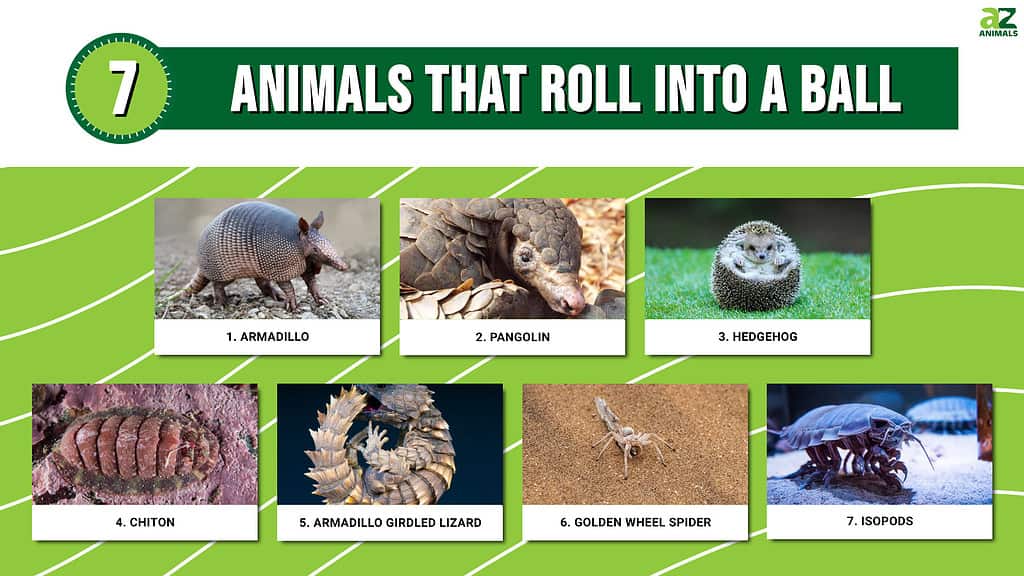
Why Do Animals Roll Into a Ball?
As humans, when we are in distress and need comfort, we curl into fetal positions. Animals also have this instinct, but they do it for reasons that go beyond finding comfort in distress.
1. As a defense mechanism
For some animals, the first and only way to defend themselves is to hide. Rolling into a ball-like shape presents the harder and sometimes more dangerous part of their body to their predator. This will deter and discourage the predator.
2. For movement
Hedgehogs have little trouble climbing up, but coming back down always presents a steeper challenge. But when they curl inward and drop down, the fall is cushioned by their exterior.
3. For preservation
Certain animals are unable to migrate as the season change. This puts them at risk of harsh elements during the colder and drier months. To preserve themselves, they curl into a ball shape to wait the weather out.
7 Animals That Roll Into a Ball
Now that you know why they roll into balls, let us look at seven animals that do this.
1. Armadillo

Armadillos are easily identified by their tough shell.
©iStock.com/6381380
Armadillos are natives of Southern America. They are easily identified by their tough shell, for which they are named. There are several species. Some are very big, like the giant armadillo, and some are quite small, like the aptly named pink fairy armadillo. But only the Tolypeutes species is capable of rolling into a ball. They do so whenever they feel threatened. Armadillos love to eat insects, grubs, and other non-vertebrates. They have very poor eyesight, but their keen sense of smell makes up for this defect.
2. Pangolin
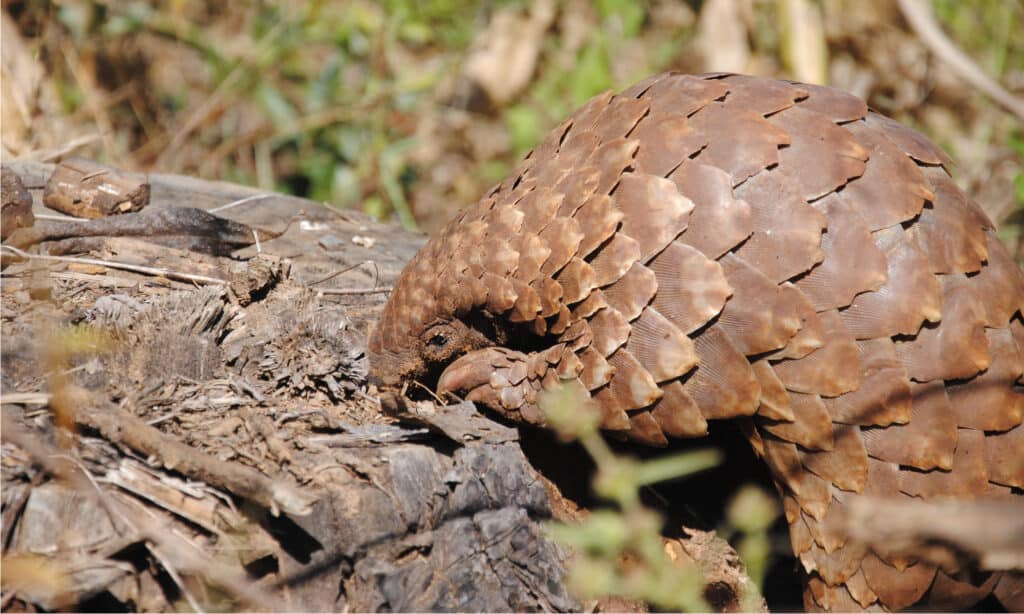
Pangolins are found mostly in Asia and parts of sub-Saharan
Africa
.
©Gemma Campling/Shutterstock.com
Sometimes referred to as scaly anteaters, pangolins are found mostly in Asia and parts of sub-Saharan Africa. These shy creatures eat ants and termites and hunt for them with their tongues. They are the most trafficked mammals because of the high demand on the black market. This demand is linked to the features that make them one of the most unique mammals: their scales. The scales are made of keratin, the same material that makes up human nails. When the pangolin turns into a ball, the scales add an extra layer of defense because of how sharp they are. Sadly, some species have been hunted to extinction while others have been red-listed.
3. Hedgehog

Hedgehogs are found in parts of Africa, Europe, and Asia.
©iStock.com/serikbaib
Hedgehogs are found in parts of Africa, Europe, and Asia. These cute mammals, with their beady little eyes, are tricksters. Their tactics for evading their predators include something called “anointing,” where they smear scents in their environments on some of their quills to evade detection. But the common form of defense we know of is their ability to roll into a tight ball and sometimes ram into their “enemies” with the pointy exterior. Like the pangolin, the quills on the back of the hedgehog are made from keratin, and the sharp pointy ends make predators wary. Their diet consists of insects, worms, and the occasional baby rodent or bird.
4. Chiton
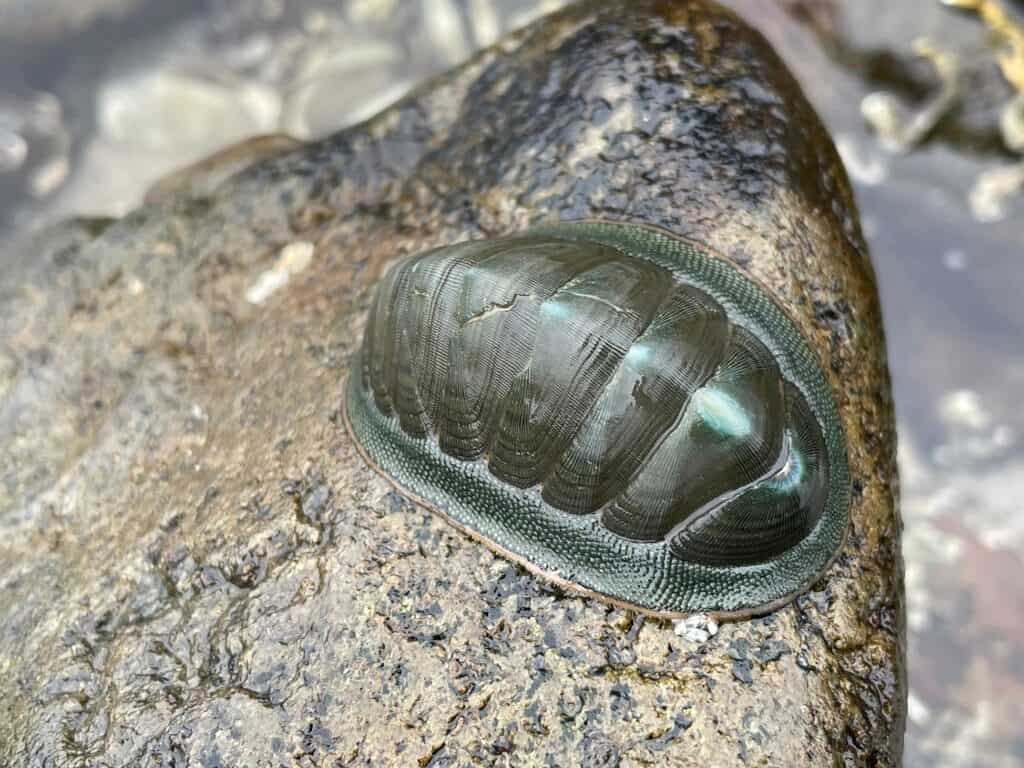
Chitons have an outer shell that is divided into eight shell plates shaped like a
butterfly
.
©Haireena/Shutterstock.com
Chitons are mollusks that are found worldwide. Although they live in water, chitons are found around the rocky parts of the sea. They feed on algae as well as bacteria in the water. Chitons have an outer shell divided into eight shell plates shaped like a butterfly. This separation allows it to stick to hard surfaces or roll into a ball when touched. Humans, crabs, and fish are some common predators that hunt chitons. When a chiton dies, its shell disintegrates as the muscle that holds it also dies.
5. Armadillo Girdled Lizard
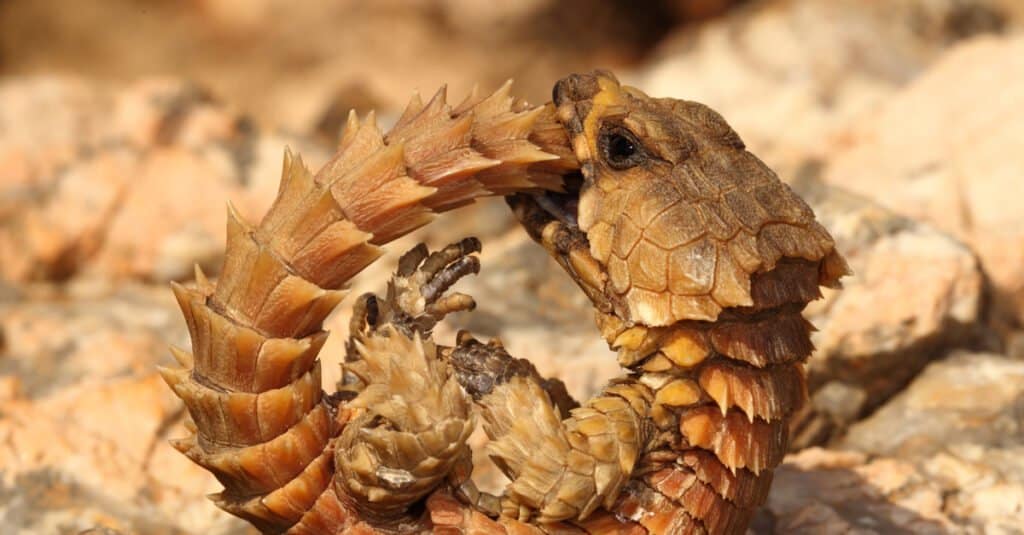
Armadillo girdled lizards love to live in rocky places, especially on the slopes of mountains.
©NickEvansKZN/Shutterstock.com
Native to South Africa, armadillo-girdled lizards love to live in rocky places, especially on the slopes of mountains. You will find them mostly in desert areas, where they feast on spiders and other insects. Occasionally, they would eat specific plants. They have a thick, scaly back that acts as a shield when they roll into a ball. Unlike the other animals listed here, in this defensive posture, they put their tail in their mouths. They are not exactly formidable, but when they are curled up, predators can’t harm or eat them.
6. Golden Wheel Spider

The golden wheel spider is mildly venomous but not harmful to humans.
©iStock.com/Wirestock
This is another native South African inhabitant. It is mildly venomous but not harmful to humans. The golden wheel spider earns its name from its method of defense. It turns to its side and rolls down the dunes of the Namib Desert, where it primarily lives. Like some of the other animals here, it is nocturnal. It comes out at night to feed on other insects. An interesting fact about the wheel spider, as it is sometimes called, is that it does not produce webs. And while it has a lot of predators, pompilid wasps are its worst. They paralyze the spider with a sting and lay their eggs inside it.
7. Isopods
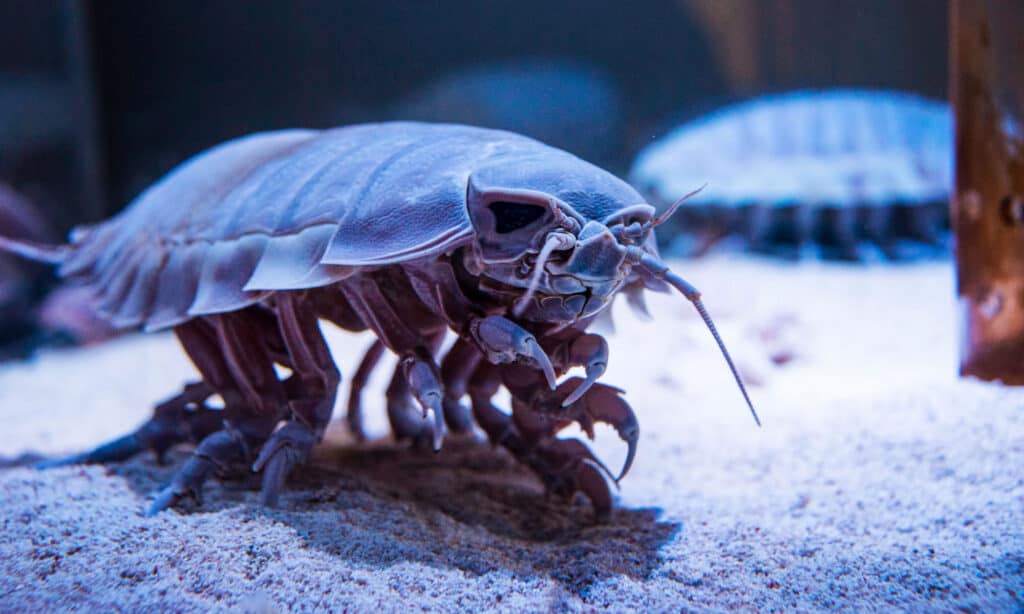
Isopods feed on plants and dead animals.
©kikujungboy CC/Shutterstock.com
There are over 10,000 species of this unique creature. Some of them live in the sea or in fresh water. But the ones that live on land are relevant to this list. Isopods are crustaceans; even on land, they tend to live in moist places. They feed on plants and dead animals. When the water in their environment runs out, they roll into a ball for preservation. They also do this whenever they are under attack. Isopods have become increasingly popular as pets. Some people keep them for entertainment. Others keep them to maintain the habitat of the reptiles they own.
Summary of 7 Animals That Roll Into a Ball
| # | Animal | Location |
|---|---|---|
| 1 | Armadillo | South America |
| 2 | Pangolin | Asia, Africa |
| 3 | Hedgehog | Africa, Europe, Asia |
| 4 | Chiton | Worldwide |
| 5 | Armadillo Girdled Lizard | South Africa |
| 6 | Golden Wheel Spider | South Africa |
| 7 | Isopods | Worldwide |
The photo featured at the top of this post is © DenisNata/Shutterstock.com
Sources
- Wildlife Informer, Available here: https://wildlifeinformer.com/animals-like-armadillos/
- Nature, Available here: https://www.nature.com/articles/237403a0
- Dickinson County Conservation Board, Available here: https://dickinsoncountyconservationboard.com/2017/12/26/how-does-a-hedgehog-roll-up/
Thank you for reading! Have some feedback for us? Contact the AZ Animals editorial team.






